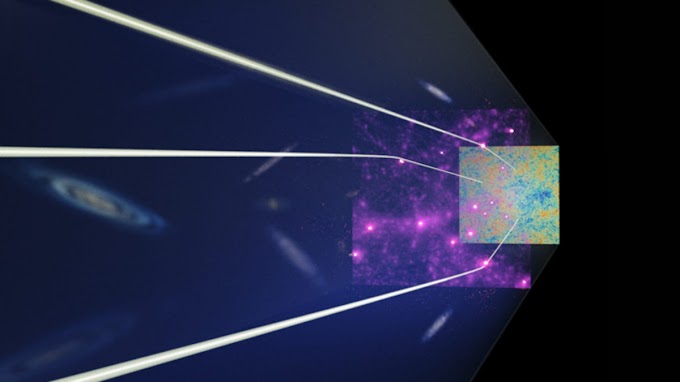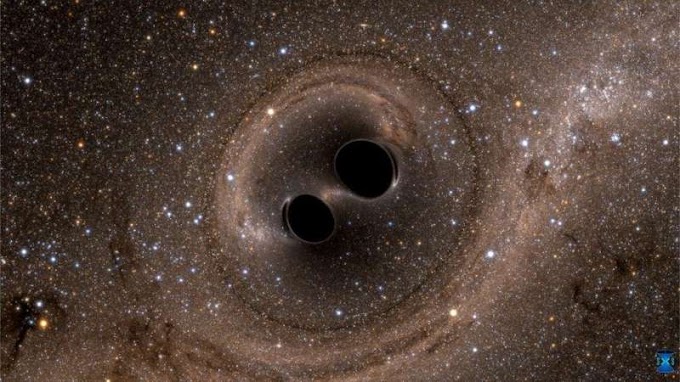The detection of an strangely compact “First of its kind” system of 3 stars become introduced earlier this 12 months. The query about how this precise mixture of a binary set of stars and a revolving larger star can shape is now the focal point in a collaboration between two young researchers on the Niels Bohr Institute at the University of Copenhagen.
 |
| CREDIT: IMAGE CREDIT: NASA/JPL-CALTECH/UCLA |
Tertiary megastar formation on a huge scale
The star system includes a binary set of stars – stars that orbit one another and then one, more massive star orbiting the binary.
“As a ways as we realise, it is the first of its type ever detected”, Alejandro Vigna-Gomez says. “We recognise of many tertiary star systems (three star systems), but they're generally substantially less large. The big stars on this triple are very near together – it's far a compact system.
The orbital duration of the binary (~1 d) is the same as that of the rotation of Earth (1 day).
The mixed mass of the 2 of them is twelve times the mass of our Sun – so instead big stars.
The tertiary star is approximately 16 instances the mass of our Sun, so even bigger! The inner orbit is round in shape with close to six revolutions of the tertiary star across the binary per year. Pretty speedy, whilst you consider the dimensions of them – unsurprisingly, the system could be very luminous, so at the beginning they had been detected as a stellar binary”.
 |
| Artist’s interpretation of HD 98800, a quadruple-star system located 150 light-years away. (Photo: Nasa/JPL) |
The dedication of amateurs brought about the discovery of the star system
The initial discovery of the unique nature of this very special system is also special within the manner that it changed into made via novice astronomers.
A network of beginner astronomers, who had been going through a public records set from NASA's TESS observatory (Transiting Exoplanet Survey Satellite) and discovered some thing a chunk out of the everyday.
The level of professionalism can be pretty high amongst amateurs, and that they made the professional astronomers aware about anomalies in the detection. It became out that what became previously believed to be stars, were virtually three.
Communities like these are referred to as citizen scientists.
 |
| An artist’s impression of the HR 6819 triple system. Image credit: L. Calçada / ESO. |
The aggregate of knowledge on dynamics and stellar evolution proved to be fruitful
Post Doctoret Dr. Alejandro Vigna-Gomez explains that once investigating the formation of the famous person system, several alternatives had been considered.
- If, for example, the larger star formed first, it might possibly have ejected material that could have disrupted the formation of a binary that near.
- Another possibility is that the binary and the star fusions one at a time from each other and subsequently encountered and locked of their orbits due to gravity.
- Third possibility, in which two binaries shaped and one merged into one, bigger star.
This is wherein the combined efforts of Bin Liu, expert on dynamics and Alejandro Vigna-Gomez’ information on star formation came in handy.
They coded the alternatives and ran greater than a 100.000 iterations at the pc, so one can verify the most possibly outcome of this situation.
The result turned out to be in favor of the two binary systems forming to begin with and considered one of them merging to 1 megastar. Their results display that the two binary state of affairs may want to in fact give an explanation for the foundation of the triple system.
The way forward requires the information of an astronomer that specialize in observations
“Now we've a version of the maximum in all likelihood state of affairs on this precise system. But a model is not sufficient. And there are two ways in which we can show or disentangle our idea in this formation” Dr. Alejandro explains “One is reading the gadget in element and the other is to make a statistical evaluation on a population of stars.”
If we go to the gadget in element, we will ought to rely on the knowledge of an astronomer. We already have some preliminary observations, but we nevertheless need to go through the facts, and ensure we're decoding it well.
Bin Liu maintains : “We additionally encourage people within the scientific community to study the facts deeply”, Post Doctoret Dr. Bin Liu says. “Maybe there are more compact systems buried within the statistics. What we really need to understand is whether or not this type of machine is commonplace in our universe”.
Alejandro Vigna-Gomez and Bin Liu have now mapped out quite a variety of work for themselves. “We want to discover an good enough telescope with available staring at time someplace inside the world, and talk to a person who is truely an professional from the observational point of view”.
The information from telescopes desires to be understood effectively. What you spot in a telescope isn't totally what you get, so to say. It need to be interpreted. So more collaboration is underway, very a whole lot within the spirit of Niels Bohr, Dr. Alejandro says: “A Chinese and a Mexican with each their different fields, dynamics and star formation, meet on the Niels Bohr Institute and now on the way to but more scientific collaboration”.











